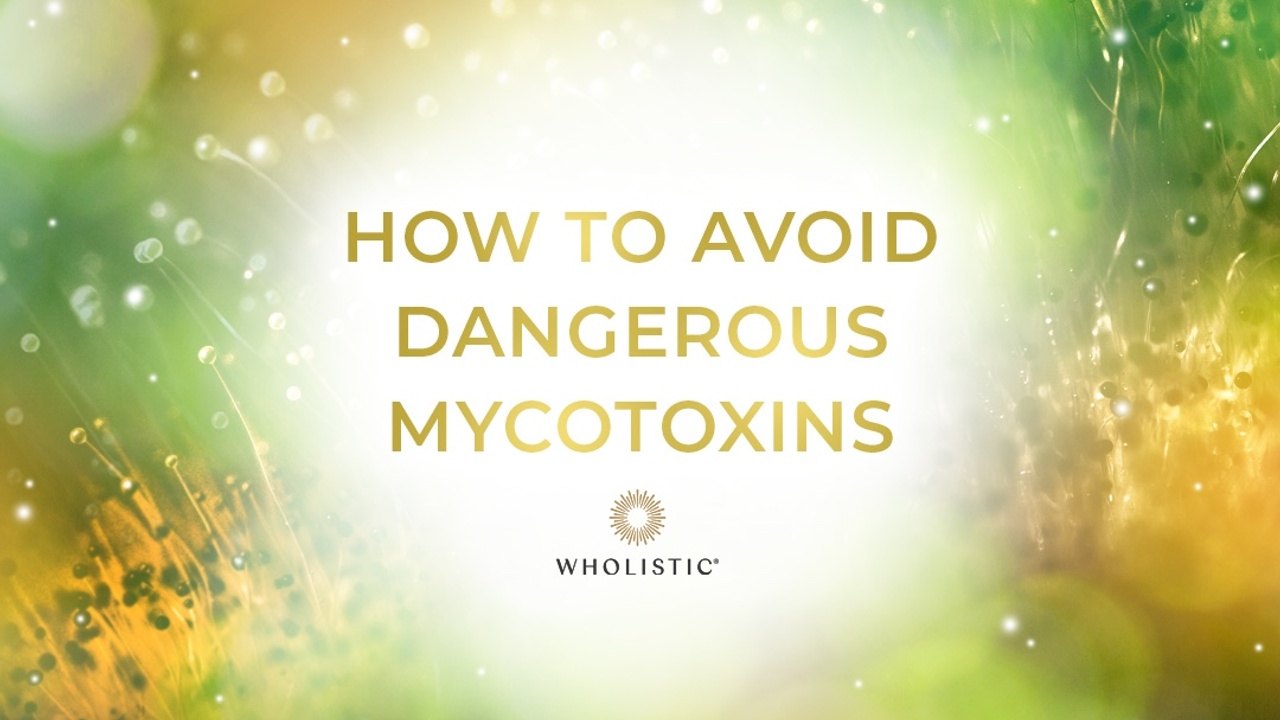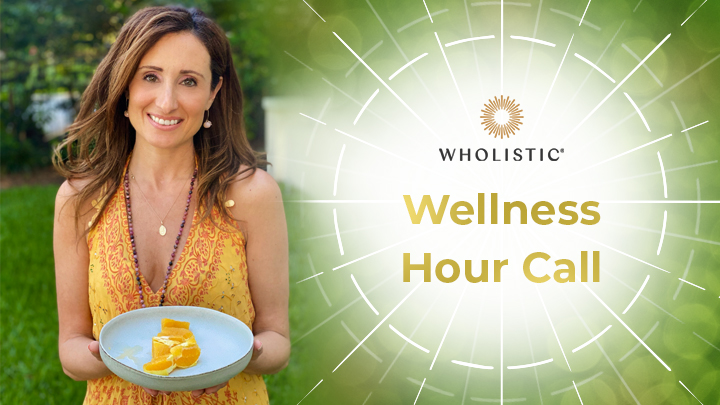How To Avoid Dangerous Mycotoxins

A touchstone for any wellness journey is having the knowledge to limit your exposure to toxic chemicals and harmful substances. Some dangers are easier to spot and avoid than others.
You may avoid highly-processed nutrient-deficient food in favor of fresh, organic, whole foods.
It is probably also a given that you choose pure filtered water instead of sugary beverages laced with additives. Perhaps you have already scrutinized your cupboards and changed your personal hygiene products to non-toxic, fragrance free items.
All of these changes are noteworthy and go a long way toward improving your health! However, there is a way you can go one step further in your journey to long lasting wellness.
That is why I’m going to share a little-known culprit that could be contributing to your toxic load.
If you are feeling unwell or experiencing mystery symptoms without a clear answer you may be dealing with mycotoxin overload. In this blog I will explain what mycotoxins are, why they are dangerous, and how you can reduce your exposure starting today.
What are Mycotoxins?
Mycotoxins are toxic compounds that are created by certain mold or fungi. This mold grows on our food, especially in warm and damp environments. Food products may be compromised by insects, bird droppings, fungus, harsh weather, improper storage, and transport. In fact, 25% of food products around the world have been found to be contaminated by mycotoxins. (1)
The food products with highest mycotoxin loads include:
- Green coffee beans
- Grains and cereals (wheat, barley, oats, and rye)
- Rice
- Nuts
- Dried fruits
- Spices and herbs
- Meat and dairy from grain-fed animals
- Wine and beer
The Dangers of Mycotoxins
Mycotoxins are toxic to humans and animals, they poison our bodily systems. Typically, the greater the exposure, the bigger of an effect it will have on the body. Mycotoxins usually enter the body by releasing spores that you breathe in, though they can also enter the body when you touch or consume the mold. (2)
Mycotoxins have been linked to allergic reactions, immune deficiency, liver disease, cardiomyopathy, hepatitis, brain damage, and cancer. Chronic and long term mycotoxin exposure is detrimental and can even lead to death. (1,2,3 and 4)
Because mycotoxins are naturally occurring, it is impossible to avoid them completely. The best course of action is prevention and limiting exposure as much as possible. (2) Luckily, there are ways to reduce the mycotoxin load.

How to Reduce Exposure
The great majority of mycotoxin contamination happens before food products ever reach us. The food and agricultural industries shoulder much of the responsibility and monitor their crops for contamination. They are required to ensure their products stay under an allowance level of mycotoxins. However, it is important for us as the consumer to be aware and choose our food products and sources wisely. (1)
In the case of coffee, research has determined that only 70 to 80% of mycotoxin found on green coffee beans is destroyed during the roasting process. Because the mycotoxin-producing mold grows on green coffee beans before they are roasted, it is a good idea to know that your coffee is coming from a safe and reliable source that screens for mycotoxins. (4)
7 More Ways to Limit Your Exposure to Mycotoxins
-
Buy your food fresh and local, directly from the source if possible. Get to know the farmers in your area at local farmers markets and talk to them about how they grow and store their products.
-
Use your food promptly to avoid storing it for an extended period of time.
-
Improve your health by eating a wide variety of anti-inflammatory foods that aid in detoxification like cruciferous vegetables.
-
Take care of your immune system so it can fight back when any invaders like mold try to compromise your health.
-
Be mindful of the air quality in your indoor space. Make sure there is adequate air flow and no water damage.
-
Make sure you are getting probiotics and prebiotics to strengthen your gut microbiome.
-
Incorporate foods into your diet that are naturally anti-fungal like: Coconut oil, garlic, raw honey, turmeric, and cinnamon.
I hope that you have found this information helpful as you continue on your wellness journey. I know this information can be jarring, especially since mycotoxins found in food are invisible so you are often unaware consumption is happening.
Wellness Hour Call
While you cannot eliminate all mold from your life, you can be mindful of its presence and take measures to prevent excess and dangerous exposures. You can also work with a trained professional to utilize specific herbs like bamboo powder extract to clear mycotoxins from your system. With awareness of things like mycotoxins, we can take action and live stronger and healthier lives.
If you feel you may be suffering from mycotoxins in your system, feel free to book a Wellness Hour Call with me.

During this 1 hour Zoom video call, I will tap into your field to intuitively test what diet and supplement regimen support your unique needs. You’ll leave the call with a concrete plan for transforming the way you nourish your body!
Dedicating this hour to optimizing your wellness can result in:
- Clear mental focus and full body energy that lasts all day
- Smooth digestion and balanced gut-health – no bloat!
- Improved skin, hair, nails, and overall healthy glow
- Simplified meals that give you more time to enjoy your life
- Less stress and beautifully balanced emotional health
You’ll fill out a brief survey when you book your appointment so I can get to know you. That way, when we hop on our call, we can jump right in and explore the goals and issues that are most important to you!
Book Now
References
-
Moran, Daniel. “The Evidence Behind Mycotoxins in Food.” The Great Plains Laboratory, Inc. The Great Plains Laboratory, Inc., March 17, 2021. https://www.greatplainslaboratory.com/gpl-blog-source/2021/07/mycotoxinsinfood.
-
Bennett, J W, and M Klich. “Mycotoxins.” Clinical microbiology reviews. American Society for Microbiology, July 2003. https://www.ncbi.nlm.nih.gov/pmc/articles/PMC164220/.
-
Cinar, Aycan, and Elif Onbaşı. “Mycotoxins: The Hidden Danger in Foods.” IntechOpen. IntechOpen, September 20, 2019. https://www.intechopen.com/books/mycotoxins-and-food-safety/mycotoxins-the-hidden-danger-in-foods.
-
C;, Levi. “Mycotoxins in Coffee.” Journal - Association of Official Analytical Chemists. U.S. National Library of Medicine. Accessed June 9, 2021. https://pubmed.ncbi.nlm.nih.gov/7451391/.
Discover Three Powerful Ways to Bring Health & Vitality Into Your Everyday Life in This FREE Masterclass by Worldwide Master Practitioner In Wholistic Healing, Elena Bensonoff.
Sign Up for the Masterclass below:





